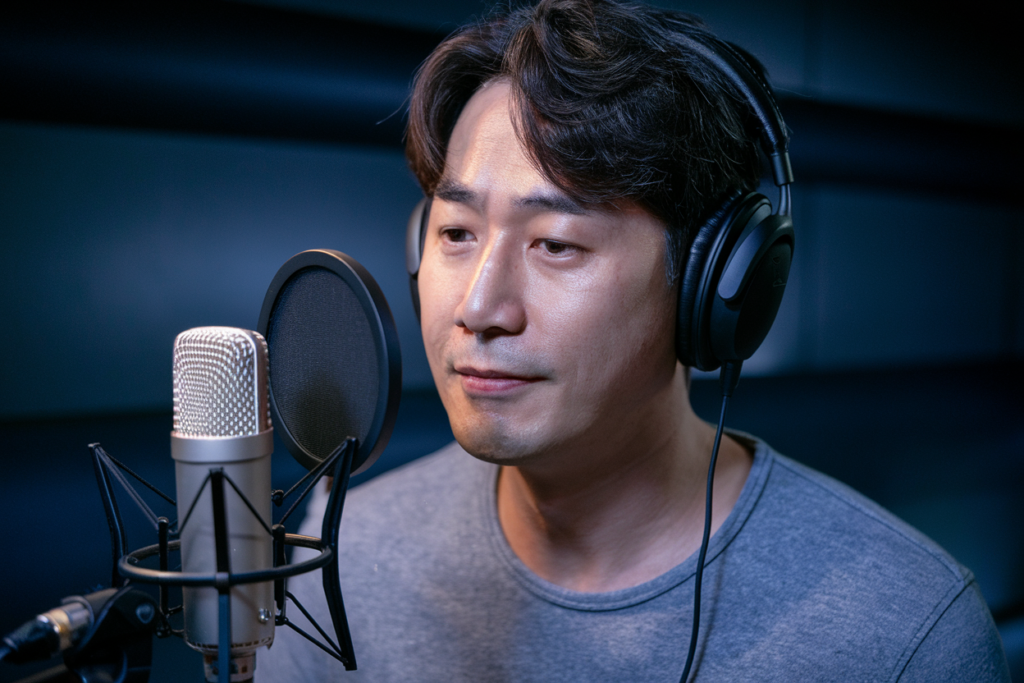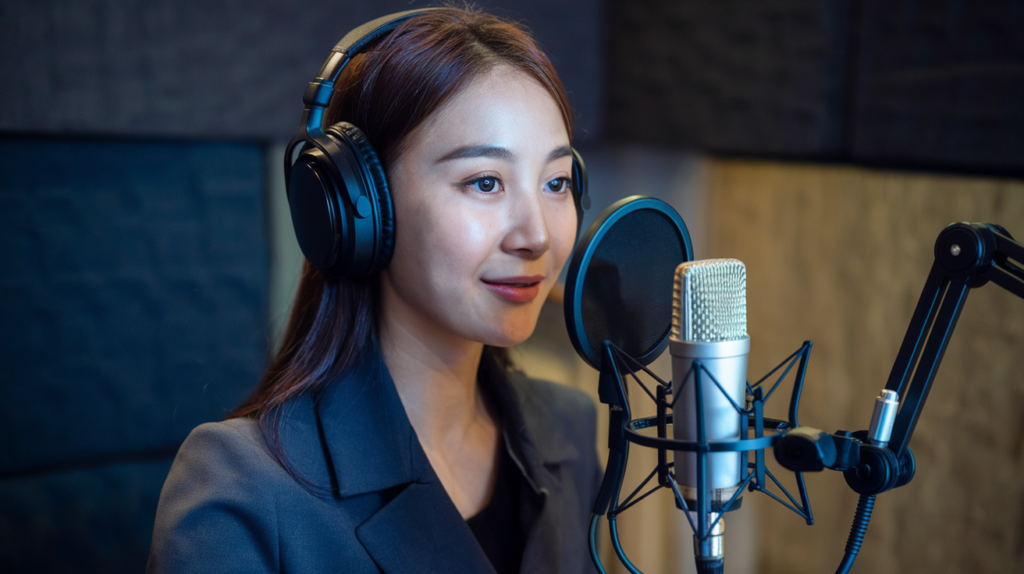Key Takeaways
- Understanding Dubbing: Korean dubbing involves replacing original audio with Korean dialogue, enhancing accessibility for viewers but facing unique challenges.
- Common Issues Identified: Key challenges include mismatched timing of dialogue and lip movements, cultural context losses in translation, and limitations of voice actors.
- Impact on Viewer Experience: Poor dubbing quality can lead to viewer disengagement and misinterpretation of content, reducing emotional connection to the material.
- Solutions for Improvement: Enhancing translation quality through skilled translators and investing in voice actor training are essential steps toward better dubbing outcomes.
- Cultural Nuances Matter: Effective dubbing must capture cultural subtleties to ensure that humor, idioms, and character intentions resonate with Korean audiences.
- Engaging Voice Talent is Crucial: Selecting versatile and experienced voice actors can significantly enhance storytelling and maintain audience engagement throughout the viewing experience.
Ever wondered why some Korean dubbed shows just don’t hit the mark? You’re not alone. Korean dubbing can be a tricky process, and several common issues often pop up that affect the final product. From mismatched lip-syncing to cultural nuances getting lost in translation, these challenges can make or break your viewing experience.
Overview of Korean Dubbing
Korean dubbing involves replacing the original audio of a film or television show with newly recorded dialogue in Korean. This process enhances accessibility for viewers who prefer listening in their native language, but it also comes with its own set of challenges.
Definition of Dubbing
Dubbing is the technique where original voice tracks are replaced by new voice recordings. In the context of Korean media, this often means that talented voice actors interpret characters’ emotions and intentions through their performances. The goal is to create a seamless audio experience that matches the visual elements on screen.
Importance of Dubbing in Korean Media
Dubbing plays a crucial role in making international content accessible to Korean audiences. It allows viewers to enjoy foreign films and shows without language barriers. Additionally, effective dubbing can enhance storytelling by capturing cultural nuances and character depth. When done well, it ensures that audiences engage fully with the narrative rather than focusing on subtitles alone. High-quality voiceovers from skilled voice artists contribute significantly to this immersive experience, making dubbed versions popular among diverse demographics across Korea.
Common Issues in Korean Dubbing
Korean dubbing presents unique challenges that can affect the overall quality of the viewing experience. Understanding these common issues helps highlight areas for improvement, ensuring a better final product.
Mismatched Timing
Mismatched timing occurs when the dialogue doesn’t sync well with the characters’ lip movements. This disconnection disrupts immersion and can distract viewers from the story. A voice actor’s delivery timing needs to align perfectly with on-screen actions to maintain believability. When this synchronization falters, it detracts from audience engagement.
Cultural Context Challenges
Cultural context plays a crucial role in translation and adaptation during dubbing. Nuances in humor, idioms, or social references may not translate directly into Korean, leading to potential misunderstandings or loss of meaning. Successful dubbing requires skilled voice artists who understand both source and target cultures to preserve these subtleties while making content relatable for Korean audiences.
Voice Actor Limitations
Voice actor limitations include factors such as range and availability. Not every voice artist possesses the versatility required for different character types or emotional depths needed in specific scenes. Additionally, limited access to experienced talent can hinder production quality. Selecting the right voice over talent ensures that performances resonate authentically with viewers, enhancing storytelling across genres.
By addressing these common issues in Korean dubbing, you can enhance viewer satisfaction and create a more engaging experience through effective adaptations.
Impact on Audience Experience
Korean dubbing significantly influences how audiences perceive and enjoy content. When done well, it enhances accessibility and emotional connection to the material. However, common issues in dubbing can create barriers that detract from this experience.
Viewer Disengagement
Viewer disengagement often arises from mismatched timing between dialogue and lip movements. When voices don’t sync with characters’ lips, immersion suffers. Audiences may find themselves distracted, focusing more on discrepancies than the story itself. Additionally, if voice actors lack the necessary range or fail to convey emotions effectively, it leads to a disconnect between characters and viewers. Engaging voice talent plays a crucial role in keeping audiences captivated; when performances feel flat or unconvincing, interest wanes.
Misinterpretation of Content
Misinterpretation of content can stem from cultural nuances lost in translation during dubbing. Humor or idioms that resonate in one language might not carry the same weight in Korean. This gap can confuse viewers or lead them to misinterpret character intentions and plot points. Skilled voice artists are vital for capturing these subtleties; without their expertise, important context may slip through the cracks, leaving audiences puzzled rather than entertained.
By addressing these factors within Korean dubbing processes—such as ensuring proper synchronization and utilizing talented voice actors—you enhance overall viewer satisfaction and foster a deeper connection with international content.
Solutions and Best Practices
Addressing common issues in Korean dubbing requires a strategic approach. Implementing best practices can significantly enhance the quality of dubbed content, improving the overall viewer experience.
Improving Translation Quality
Quality translation serves as the backbone of effective dubbing. Ensuring that translations accurately reflect cultural nuances is crucial. Engage professional translators who understand both languages deeply and are familiar with idioms, humor, and context-specific references. Utilizing native speakers during the translation process helps retain authenticity while minimizing misunderstandings. Regular reviews and revisions can refine scripts further, allowing voice actors to deliver performances that resonate with audiences.
Enhancing Voice Actor Training
Investing in voice actor training elevates performance standards in Korean dubbing. Providing workshops focused on emotional expression and character interpretation equips voice talents with essential skills for impactful delivery. Encouraging collaboration between directors and voice artists fosters an environment where feedback leads to continuous improvement. By prioritizing training on pronunciation, tone modulation, and timing, you ensure that your voice talents effectively convey emotions matching the original content’s intent.
By implementing these solutions—improving translation quality and enhancing voice actor training—you contribute to a more engaging viewing experience for audiences enjoying dubbed content.
Conclusion
Korean dubbing plays a crucial role in making international content accessible to local audiences. While it’s essential for enhancing viewer engagement and emotional connection, common issues can hinder the experience. By focusing on quality translations and investing in training for voice actors, you can significantly improve the overall viewing experience.
Addressing mismatched lip-syncing and cultural nuances ensures that your audience remains immersed in the story. With these improvements, you’ll pave the way for more authentic performances that resonate with viewers. Ultimately, prioritizing excellence in Korean dubbing creates a richer entertainment landscape for everyone involved.
Frequently Asked Questions
What is Korean dubbing?
Korean dubbing involves replacing the original audio of films or TV shows with newly recorded dialogue in Korean. This technique enhances accessibility for viewers who prefer watching content in their native language and allows for a deeper emotional connection to characters.
What are common challenges faced in Korean dubbing?
Common challenges include mismatched lip-syncing, which disrupts immersion, and the loss of cultural nuances during translation. These issues can lead to misunderstandings and diminish viewer engagement with the dubbed content.
Why is voice acting important in dubbing?
Voice acting plays a crucial role in conveying characters’ emotions and intentions. Talented voice actors help bring stories to life, creating an engaging experience that resonates with audiences, especially when cultural subtleties are captured effectively.
How does poor dubbing affect viewer experience?
Poorly done dubbing can distract viewers through mismatched timing and unconvincing performances. Misinterpretations due to lost cultural context may confuse audiences, leading to reduced enjoyment and disengagement from the material.
What solutions can improve Korean dubbing quality?
To enhance quality, it’s essential to engage skilled translators familiar with both languages and cultures. Regular script reviews, along with focused training workshops for voice actors on emotional expression, can significantly elevate performance standards in dubbing.







